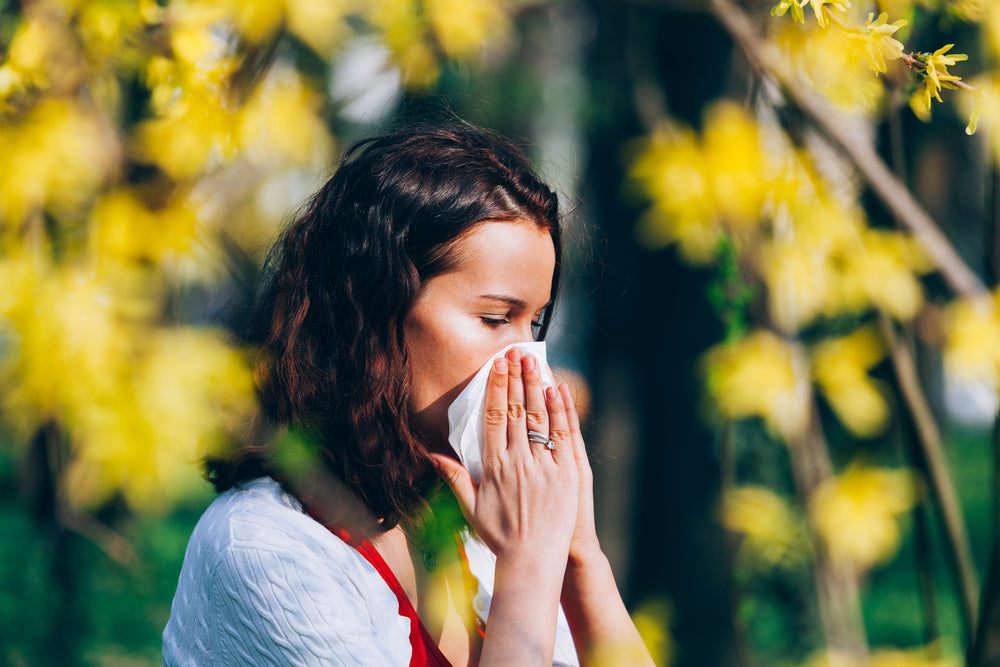
Are Allergies an Autoimmune Disease?
What are allergies?
You are probably familiar with allergies and have likely had some experience with your body responding negatively to a substance – natural or not. Allergies occur in the human body when the immune system overreacts to an otherwise harmless substance, such as pollen, dust, pet dander, mold, peanuts, insect bites, jewelry or cosmetic ingredients.
What are the symptoms of allergies?
Allergies tend to lead to a heap of undesirable symptoms, including the following:
- sneezing
- coughing
- itchy eyes
- diarrhea
- vomiting
- wheezing
About one in every five Americans suffered from allergies, and as you know, not all Americans suffer from the same allergies. A person’s reaction to a substance depends on their immune system.
Are allergies an autoimmune disease?
Due to the malfunctioning of the immune system, it’s easy to confuse allergies with autoimmune disorders. However, these two experiences in the body are not the same!
Think of allergies as reactions and autoimmune diseases as attacks. Allergies occur as responses to substances in the air or being ingested; autoimmune diseases occur as the immune system starts attacking itself actively, not as a reaction to any substance or experience.
Are food allergies and autoimmune disorders increasing?
In America, autoimmune diseases and food allergies are aggressively on the rise, thanks in part to the body’s microbiome changing.
What is the microbiome?
The microbiome refers to the body’s collection of friendly bacteria, which is necessary to keep the gut clean and protected and all systems a go.
The problem Americans are experiencing is a lack of exposure to bacteria, which is actually weakening the body’s natural bacteria collection, the microbiome or microflora (if we’d said microflora from the start you’d have know what we were talking about, right?).
But really, Americans have become hyper-aware of bacteria, and consequently, product manufacturers have created solutions to every undesirable specimen that could possibly make itself present in a child’s early life as the immune system is developing.
This isn’t to peg the problem of the dwindling microbiome and compromised immune system on the companies making us the products to keep our homes clean. Parents are becoming trapped into habits of over-hygienic maintenance, giving their children little opportunity to build up natural defenses against bacteria.
How to foster healthy bacteria at home:
These tips are especially helpful if you are raising children, but they offer useful context to anyone wondering how to decrease allergic reactions throughout life.
Clean less
Cleaning is important to hygiene; over-cleaning can be detrimental to health. If you wipe away every trace of a possible bacteria, there is no hope of your body assimilating to bacterial content and working with it later on.
Get muddy
There’s a big difference between getting muddy with dirt and getting dirty with harmful bacteria. Exposing children to dirt and mud in early childhood development exposes their bodies to all sorts of natural bacteria they’ll face again someday and build a natural defense against any that might be harmless.
Share food
As long as you are not sick, sharing your food with your kids is a great way to transfer your adult saliva to your babes’ microbiomes. If they want a bit, let them have it! Share a spoon? Even better.
Opt for probiotics
By now, you’ve heard all about probiotics, pre-packaging, good-for-the-gut foods. Along with buying useful supplements in the store, you can eat fermented foods which are loaded with naturally healthy probiotics.
Allergy Season
Autumn ragweed season has fallen upon us early this year. This generally occurs from late summer to early fall due to ragweed shrubs releasing pollen into the air. All states in the US have ragweed. You may find yourself with sneezing, nasal congestion, sinus headaches, itchy eyes, as well as coughing and wheezing. Asthma sufferers may be agitated by this as well.
Sound familiar?
Here are some tips that may help you get some relief from this uncomfortable experience.
- During these months, avoid any contact with shrubs growing by riverbanks, abandoned lots, and in wooded areas or grassy plains. You can identify Ragweed shrubs by their broad, deep-toothed leaves. They tend to grow in clumps.
- Opt to stay indoors when the count is high. Turn on the central air or air conditioning, making sure that doors and windows are closed.
- Use the air conditioning system in your car as well to filter out pollen.
- Watch the weather channel to track the pollen count.
- If you are a runner or walker try to do these after work; pollen counts are higher in the morning.
- Vacationing abroad during these months may be an option, but research the area for its pollen count before purchasing tickets.
- Avoid any dairy products, sugar and white flour as these tend to produce mucous.
Despite your best efforts, you may end up suffering from ragweed allergies anyway. Below are a couple suggestions for natural remedies that you may want to try to reduce symptoms.
- Vitamin C and garlic are great for building up your immune system as well as warding off potential allergens. Raw garlic is best, but supplements are acceptable.
- Raw onion can be consumed at the onset of sneezing. A tender nose, itchy throat, and eyes sensitivity to light are hay fever symptoms and said to respond well to this.
- A.M.P. FLORACEL
Before you let yourself panic about the possibility of an autoimmune disease based on the presence of allergies, remember that the two bodily experiences are not the same; allergies are simply a reaction to substances.
To learn more about allergies and shop for probiotics and other immune system supplements, reach out to AMP Floracel and browse our online store.

